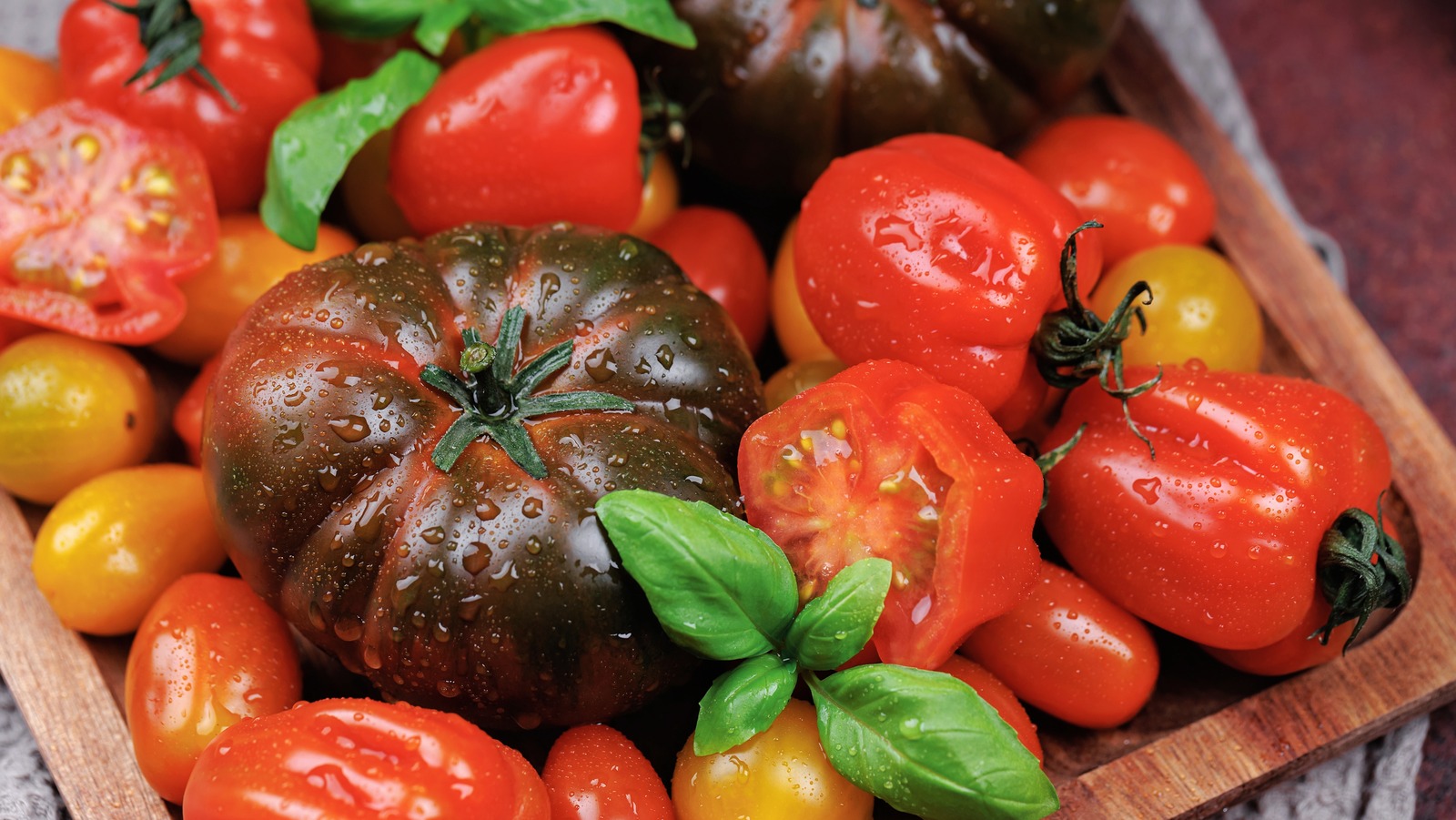
"Piled next to lines and lines of identical Roma and Beefsteak tomatoes, the colors and lumps of heirlooms give way to a host of questions. What exactly is an heirloom tomato anyway? Do they taste better? Or are those misshapen tomatoes just another form of visual produce marketing? The answer to that last question is "kind," but in the best way possible. Ultimately, heirloom tomatoes' unique shapes and colors are their natural form because they were passed over for genetic modification."
"The real question you should be asking when thinking about heirloom tomatoes isn't why they look so different; it's why all the other types of tomatoes look the same. In nature, fruits and vegetables don't have the perfectly identical shapes you see on grocery store shelves. All tomatoes you eat have been bred and had their DNA altered in some way, either through genetic engineering or through natural processes like hybridization and domestication."
Heirloom tomatoes exhibit a wide array of shapes and colors because they retain natural variation that was not prioritized in modern breeding. Cultivated tomatoes have undergone DNA changes through domestication, hybridization, cross-pollination, and selective seed saving by farmers. Genetic engineering since the 1970s enabled more targeted alterations, but the drive toward identical produce began earlier due to consumer market demands. Post–World War II advances in refrigeration and transportation supported industrial agriculture and broader distribution, encouraging selection for uniform appearance. Heirlooms therefore preserve older, less-modified tomato forms.
Read at Tasting Table
Unable to calculate read time
Collection
[
|
...
]